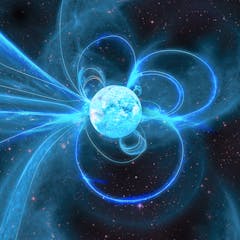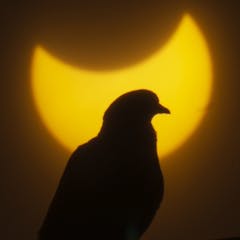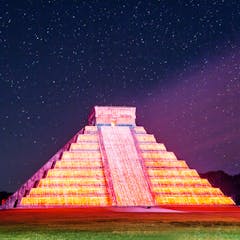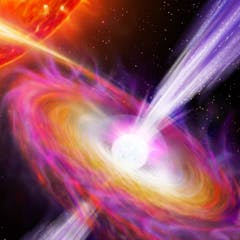
Articles on Astronomy
Displaying 21 - 40 of 813 articles

A type of eclipse is crucial for measuring what’s in the atmospheres of planets orbiting distant stars.

Now out in space for more than two years, the James Webb Space Telescope is a stunningly sophisticated instrument.

Astronomers caught the bizarre ‘awakening’ of an incredibly rare magnetic star.

Textbooks often show Earth’s orbit around the Sun as an almost egg-shaped ellipse. The real story is very different.

To protect their kings, ancient Mesopotamians discovered how to predict eclipses, which were associated with the deaths of rulers. This eventually led to the birth of astronomy.

Eclipses have long fascinated and intrigued people, and anticipation of the total solar eclipse on April 8 is no exception. The beauty, history, mythology and science of eclipses justify the hype.

A total solar eclipse is a beautiful phenomenon worth seeing, but worth seeing safely.

Since an eclipse only lasts a few minutes, you need more than just a handful of scientists running around collecting data on bird activity. That’s where a new app comes in.

The sky is becoming more cluttered with satellites and space junk. This is affecting astronomical study, but will only have a minor effect — if any — on the viewing of the solar eclipse.

The skies and the gods were inseparable in Maya culture. Astronomers kept careful track of events like eclipses in order to perform the renewal ceremonies to continue the world’s cycles of rebirth.

Some ancient texts record what were likely dying stars, faintly visible from Earth. If close enough, these events can disturb telescopes and even damage the ozone layer.

Europa Clipper will contain a plaque that celebrates humanity’s relationship with water and a decades-old tradition of searching for life outside Earth.

Powerful jets are launched from the most massive objects in our universe, but we don’t fully understand how. This measurement gets us a step closer to solving the mystery.

The solar corona can be seen during the solar eclipse on April 8. Astronomers are still trying to figure out the mysteries of the corona, including why it’s so hot.

The eclipse will allow scientists to get rare measurements of the Sun’s atmosphere.

There are several ways in which stars can destroy and swallow their own planets.

Eclipses are rare, fantastic celestial events. Here’s how educators can help visually impaired students enjoy eclipses alongside their sighted peers.

The largest study yet of ‘twin stars’ shows planetary orbits may be less stable than we thought.

Giant helium balloons are a cheap, more environmentally friendly alternative to rocket launches – and you get the satellite back.

Floating crystals can pause the stellar aging process, providing a final energy source to otherwise dead stars.





